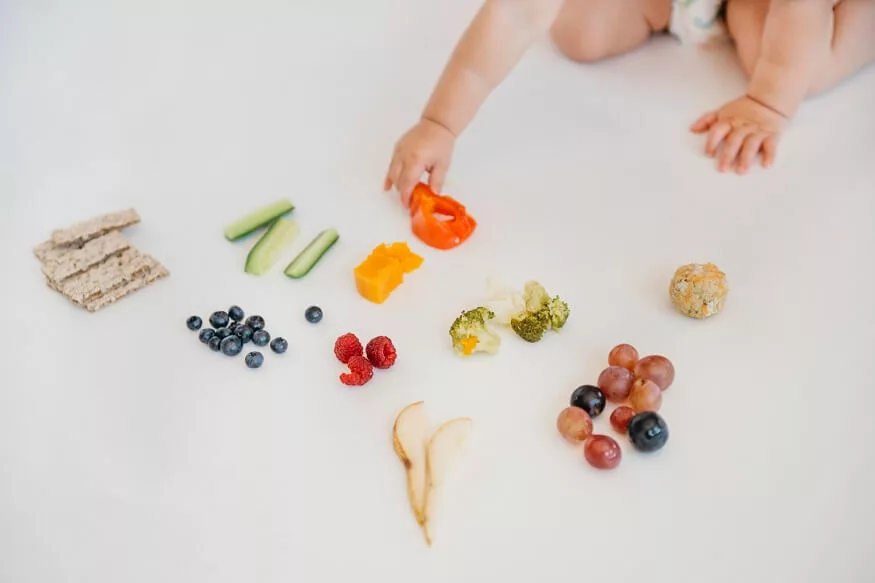Encouraging toddlers to try new foods can often feel like navigating a culinary maze. Many parents find themselves grappling with the challenge of introducing diverse and nutritious foods to their little ones, who may exhibit a natural reluctance to venture beyond familiar tastes. In this guide, we’ll explore effective strategies on how to get toddlers to try new foods, understanding the reasons behind their resistance, and providing creative food ideas that make mealtime an exciting adventure.
Understanding Toddler Food Refusal
Before delving into tactics to encourage toddlers to try new foods, it’s crucial to understand why they might be resistant in the first place. Toddlers are at a stage of development where they are asserting their independence, and this extends to their food preferences. They may also be sensitive to new textures, colours, and smells, making them wary of unfamiliar foods. Additionally, toddlers have smaller appetites and may be more cautious about trying foods due to an evolutionary survival instinct to avoid potential toxins.
Also Read: How Broccoli Can Be a Superfood for Kids
How to Introduce New Foods to Toddlers
Here are a few ways on how parents can introduce new foods to toddlers:
- Gradual Exposure: Start by introducing new foods gradually. Offer a small portion alongside familiar favourites to ease your toddler into the experience. This way, they won’t feel overwhelmed by a plate full of unfamiliar items.
- Lead by Example: Toddlers are keen observers. If they see parents or older siblings enjoying a variety of foods, they are more likely to be curious and willing to try them. Make mealtime a family affair, showcasing a positive attitude towards diverse foods.
- Get Creative with Presentation: Presentation plays a significant role in enticing toddlers to try new foods. Experiment with vibrant colours, interesting shapes, and playful arrangements on the plate. Turn vegetables into fun shapes or create a rainbow of fruits to make the dining experience visually appealing.
- Involve Them in the Process: Allow toddlers to be part of the meal preparation process. Whether it’s washing vegetables, stirring ingredients, or placing items on a plate, involving them creates a sense of ownership and excitement about the meal.
- Make it a Sensory Experience: Toddlers often explore the world through their senses. Encourage touching, smelling, and even playing with new foods. This tactile engagement can help overcome their initial apprehension.
- Positive Reinforcement: Offer praise and positive reinforcement when your toddler tries something new. Celebrate their small victories and avoid pressuring or scolding them. A positive atmosphere around mealtime fosters a more receptive attitude towards trying different foods.
- Food Play and Exploration: Create a playful environment around food by allowing toddlers to explore different textures through hands-on activities. Finger painting with mashed potatoes, making shapes with playdough using food-safe items, or squishing soft fruits can be entertaining ways to familiarise them with the feel of various foods.
- Colourful Food Palette: Introduce a variety of colours on your toddler’s plate. Different coloured fruits and vegetables not only make the meal visually appealing but also signal a diverse range of nutrients. Explain the importance of “eating the rainbow” to make the experience educational and fun.
- Sensory Plates: Set up sensory plates with small portions of different foods arranged in sections. Include a mix of crunchy, soft, smooth, and chewy textures. Toddlers can explore and taste each compartment, making it an interactive and sensory-rich experience that can reduce food aversions.
- Theme-based Meals: Create theme-based meals around your toddler’s interests. If they love animals, serve a “zoo-themed” meal with animal-shaped sandwiches, fruit animals, and vegetable trees. Aligning meals with their interests can spark curiosity and make trying new foods more exciting.
Also Read: 10 Brilliant Health Benefits of Cucumber for Kids
Creative Food Ideas for Toddlers
Here are some creative food ideas for toddlers
- Fruit Kabobs: Thread bite-sized fruit pieces onto skewers to create colourful and appetising fruit kabobs. The interactive aspect of assembling and eating these kabobs makes it an engaging and enjoyable experience for toddlers.
- Vegetable Shapes: Use cookie cutters to transform vegetables into appealing shapes. Carrot stars, cucumber hearts, and bell pepper circles can turn an ordinary vegetable platter into a visually stimulating and tasty treat.
- Smoothie Popsicles: Blend a variety of fruits and yoghurt to create a delicious smoothie. Pour the mixture into popsicle moulds for a refreshing and nutritious frozen treat. Toddlers will love the novelty of eating a popsicle, and you can sneak in different fruits without them even noticing.
- Dip it Right: Introduce a selection of dips, such as hummus, guacamole, or yoghurt-based sauces, to accompany vegetables or finger foods. The act of dipping can make the experience more enjoyable, and the variety of flavours can entice a toddler’s taste buds.
- Storytime Snacks: Connect food with storytelling by creating snacks inspired by your toddler’s favourite books. For example, if reading about a jungle adventure, serve a “jungle plate” with tropical fruits and edible animal shapes.
- Edible Art Sandwiches: Transform ordinary sandwiches into edible works of art. Use cookie cutters to shape bread slices and create sandwiches that resemble animals, cars, or other fun shapes. Decorate with healthy toppings like cucumber eyes or cherry tomato noses to make lunchtime a delightful and artistic experience.
- Mini Pancake Stacks: Make mini pancakes and encourage creativity by offering an array of toppings. From sliced bananas and strawberries to a drizzle of honey or a dollop of yoghurt, toddlers can assemble their own mini pancake stacks, making breakfast or brunch an interactive and tasty experience.
- Veggie Critters: Create whimsical vegetable critters by arranging various veggies into animal shapes. Use cucumber slices for the body, cherry tomatoes for the head, and carrot sticks for legs. This not only makes vegetables more appealing but also turns snack time into a playful and imaginative adventure.
Also Read: Practical Strategies to Kick the Habit of Food Throwing
Encouraging toddlers to try new foods requires patience, creativity, and a positive approach. By understanding the reasons behind their resistance, gradually exposing them to new flavours, and incorporating creative food ideas, parents can turn mealtimes into enjoyable and enriching experiences. EuroSchool believes that every small step towards embracing a diverse palate is a triumph, and fostering a positive relationship with food in the early years sets the foundation for a lifetime of healthy eating habits.










